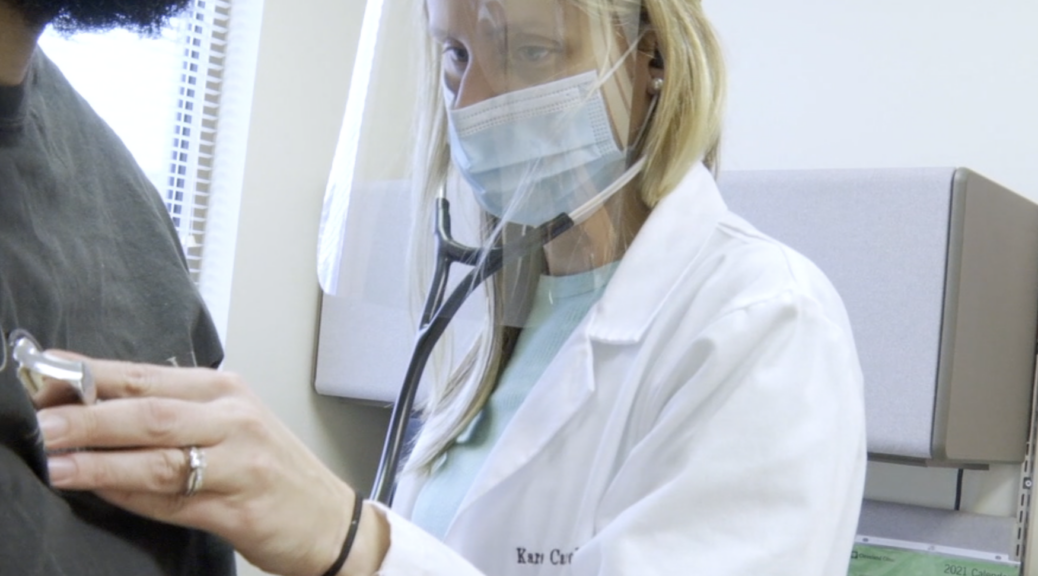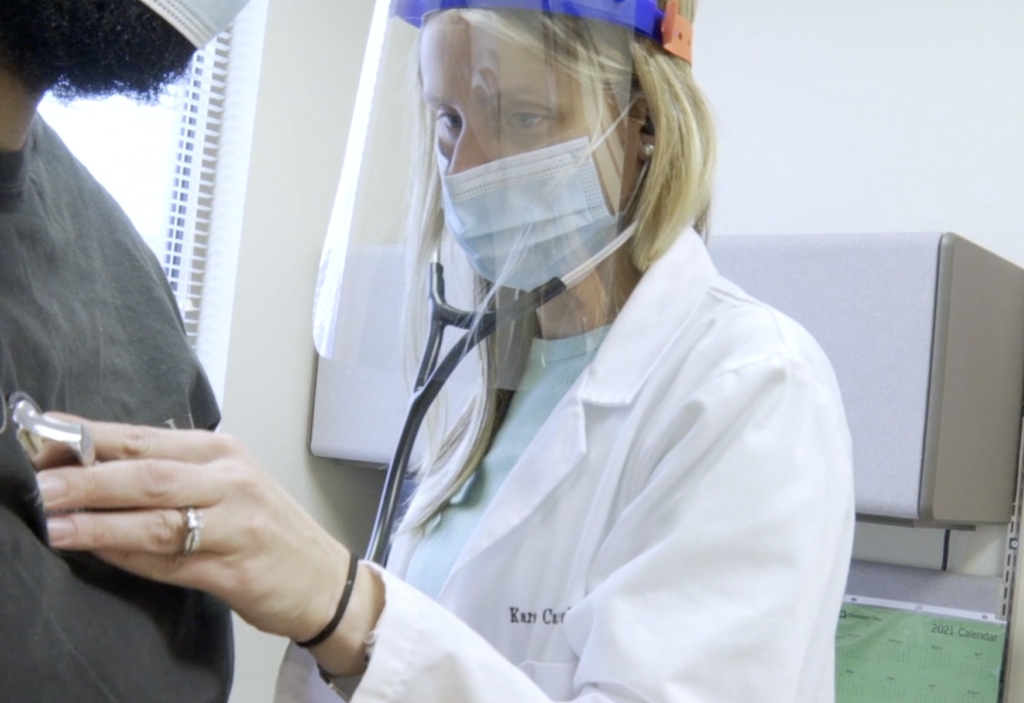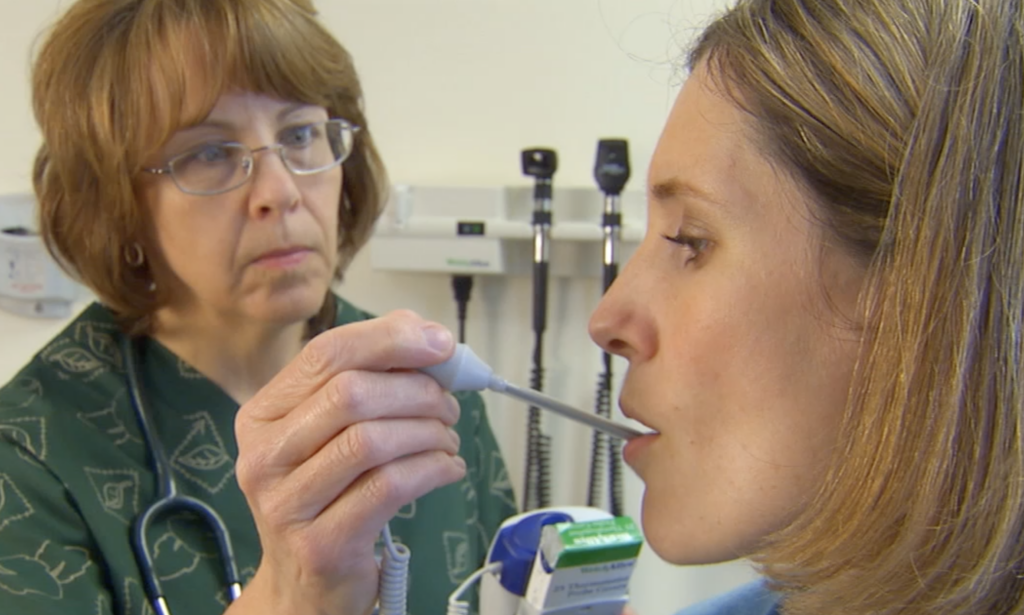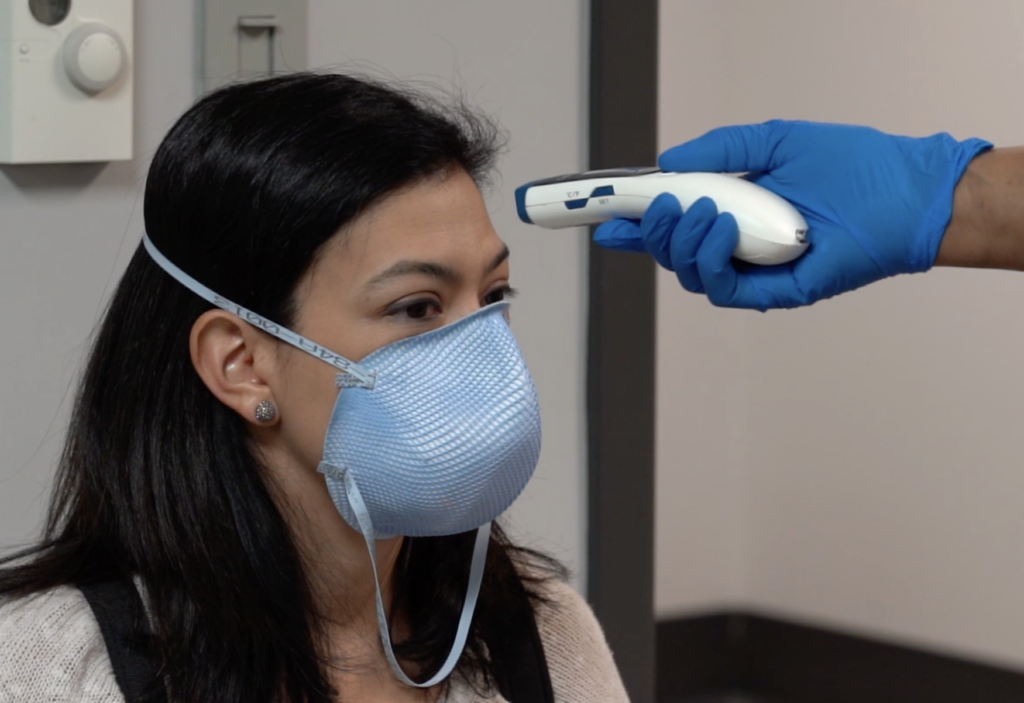
New Study Shows Removal of Mask Mandates in Hospitals Did Not Significantly Effect COVID Cases
When the Coronavirus shut down the world in the early months of 2020, hospital staff and visitors were mandated to start wearing masks.
According to a study by the National Library of Medicine, hospitals across the United States saw a 97 percent compliance rate when it came to hospital staff masking up during the pandemic.
It took nearly four years for cases to decrease, and even then hospitals were hesitant to remove mask mandates. When those mandates were lifted, new data emerged.
A new study showed that removing the mask mandate for hospital staff and visitors did not have a significant effect on hospital-acquired COVID-19 cases throughout the pandemic.
The study, done by a group of doctors and researchers at St. George’s University Hospitals in London, spent 40 weeks watching and studying the hospital-acquired Covid-19 rates. For the first 25 weeks of the study, both hospital staff and visitors were required to wear masks on hospital property. At week 26 of the study, the mask mandate for workers and visitors was removed.
According to the study, 90% of the United Kingdom’s population aged 12 and up was vaccinated by the end of 2021.
Infectious Disease and Microbiology Dr. Rohan Mehra and his team of researchers first started seeing a lack of data around the correlation between mask mandates and cases inside the hospital in 2022 and wanted to take a closer look.
“We felt there was a lack of actionable data in this area,” Mehra said. “The time period our study looks at is at a point in the pandemic where largely the worst was over and immunity in the population was high.”
Other studies similar to this one were done before, but nothing quite like this. Those studies looked in the mask itself, while Dr. Mehra and his team focused on the mask mandate itself regardless of the type of masks being worn.
“Other studies conducted had often looked at masks themselves, like airflow models, or contained environments,” Mehra said. “Whereas our essentially focused on a practical analysis of policy and people. Given all we can comment on is the significance of a mask mandate it may show more about people than masks themselves but in essence, this is what informs policy and is therefore an important factor.”
Thanks to the timing of the study, the hospital already had the mask mandate in place and the data was not hard to find. All the team had to do from there was to start tracking it.
“Our study was retrospective in nature and analyzed findings from policies that had already been implemented so from that perspective there was no challenge,” Mehra said. “Given the hospital’s approach to Covid, it meant that data collection was fairly simple as it could utilize data that was routinely being collected in the hospital as part of routine screening of patients to ensure there were no cases or outbreaks being missed.”
The study ultimately revealed that removing the mask mandate late into the pandemic showed no significant difference in hospital-acquired COVID-19 cases.
“Based on this study alone I do not think there are sweeping statments that can be made.”
Infectious Disease and Microbiology Dr. Rohan Mehra
“Based on this study alone I do not think there are sweeping statements that can be made,” Mehra said. “What I do think our study shows is that when dealing with a pandemic of this nature, when immunity and vaccination rates are high as well as the disease itself causing less severity, staff mask mandates do not make a significant difference.”
Mask-wearing was classified as a political issue during the pandemic, but that did not factor into the study.
“I think sadly as with many issues in society masks became far too highly politicized and this is something we see creeping into healthcare more and more,” Mehra said. “It is important that we do not let political bias influence our view on scientific findings either way, we must judge evidence rigorously and on its own merits and not bring our own bias to these findings.”
Patrick Burke, an infection Prevention Program Manager at Cleveland Clinic and a Ph.D. candidate at Kent State University in the Epidemiology track, is also doing a similar study to for his Ph.D. dissertation and was available to speak more about the findings.
“This study was of particular interest to me because one component of my Ph.D. dissertation is similarly using interrupted time series analysis to evaluate the effect of Universal Pandemic Precautions, mandatory eye protection, and source control masks for health care workers, on the incidence of job-related COVID-19 in those health care workers,” Burke said.
Burke, who holds a Master’s degree in Public Health, noted it is also possible that patients or visitors can be infected with COVID-19 in a number of ways.
“It’s important to note that patients can develop COVID-19 in the hospital through a number of pathways,” Burke said. “They are either infected by a contagious healthcare worker, by another patient or are incubating with subclinical illness upon admission diagnosed later on in the hospital admission.”
While St. George’s University Hospitals did screen all patients for Covid-19, it is also possible for patients to infect other patients with Covid-19 as well.
“Mehra and colleagues did not account for the possibility of patient-to-patient transmission of COVID-19.”
Patrick Burke, infection Prevention Program Manager at Cleveland Clinic
“While the study hospital did screen all patients for COVID-19 upon admission, Mehra and colleagues did not account for the possibility of patient-to-patient transmission of COVID-19,” Burke said. “An outbreak or a single “super spreader event” either in the pre-or post-intervention period might explain the apparent lack of effect of removing the mask mandate.”
Timothy Meyers, the executive director of the School of Nursing and the Associate Dean of the College of Health and Human Sciences at the University of Akron also was available to share his thoughts on the study.
“I’m hesitant about the data they shared,” Meyers said. “A lot of times scientists focus on statistical significance, which is great, but there is also what we call practical significance and in my estimation, the study did not focus on any practical significance.”
The hesitancy that Meyers shared is because while there is no statistical difference in the original study, there were still new patients who were contracting COVID-19.
“In my opinion, one person who gets Covid because of the masks being removed is a concern. It doesn’t matter if it is a statistically significant number of individuals because that one person is someone’s mother, daughter, son, or grandma.”
Timothy Meyers, Associate Dean of the College of Health and Human Sciences at the University of Akron
“In my opinion, one person who gets Covid because of the masks being removed is a concern,” Meyers said. “It doesn’t matter if it is a statistically significant number of individuals because that one person is someone’s mother, daughter, son, or grandma.”
Brad Stainbrook is a reporter. He can be reached at Bstainbr@kent.edu.


